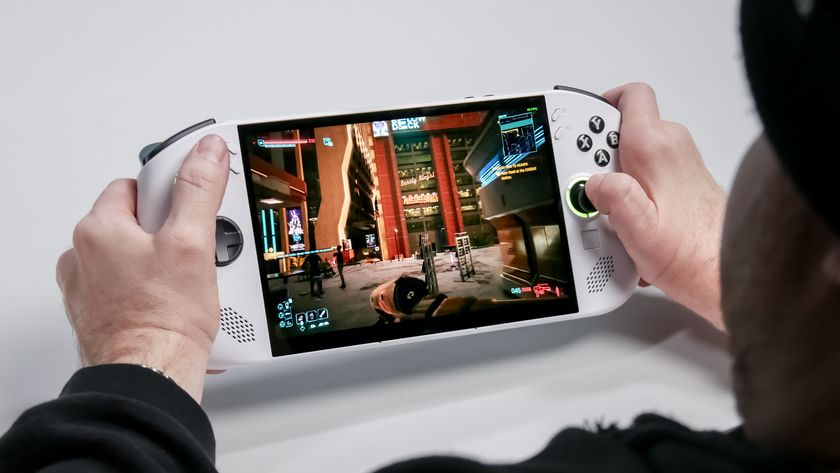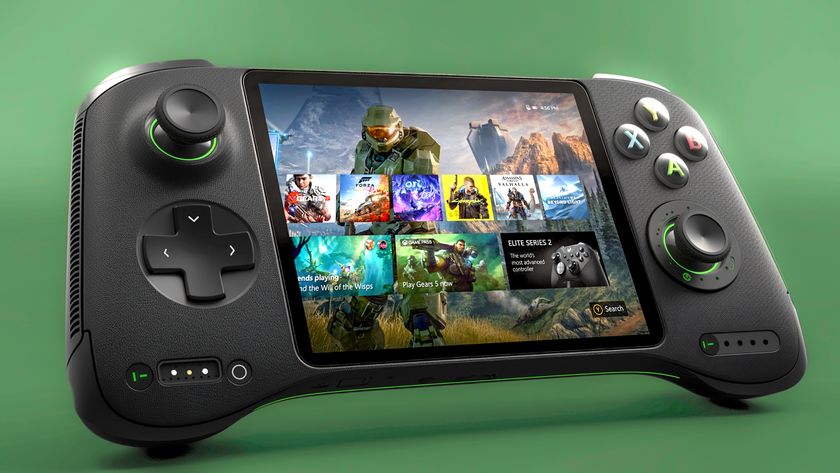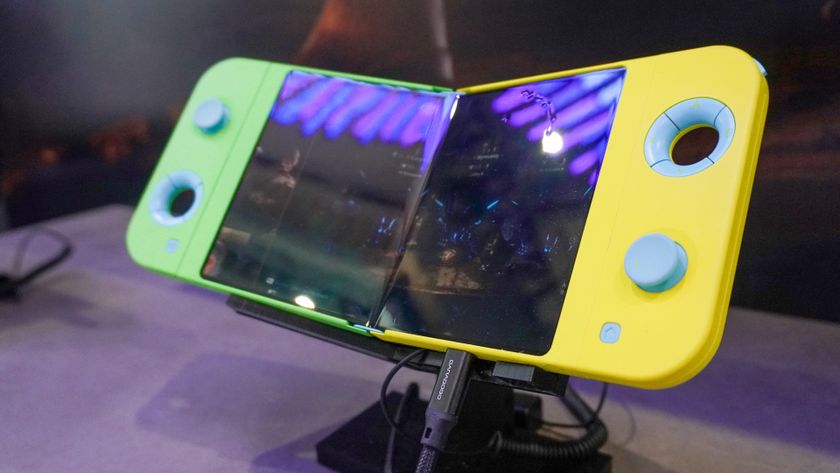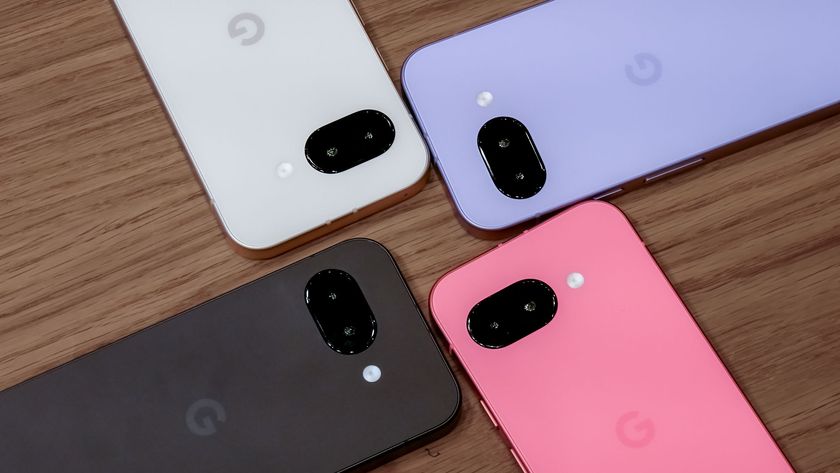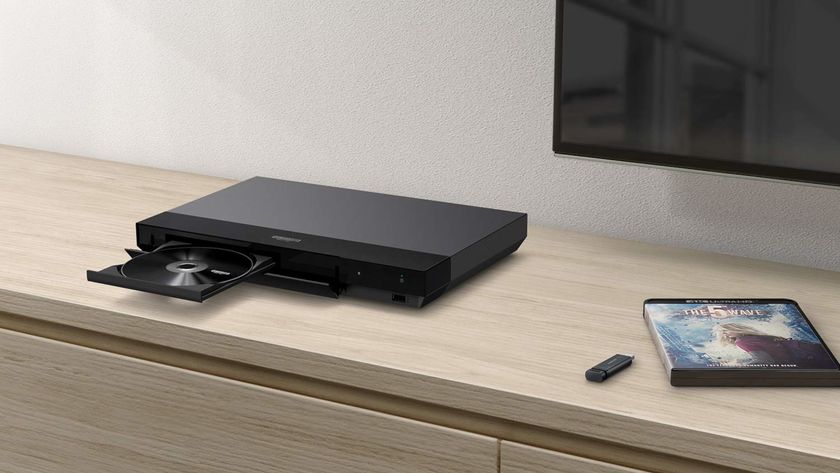I love the Steam Deck but I’m ditching it for Steam Deck OLED — here’s why
Steam Deck is dead. Long live Steam Deck OLED

Of course the Steam Deck OLED gets announced when I take a random week’s vacation. Said break from work mainly revolved around playing the incredible Marvel’s Spider-Man 2 wearing roughly 14 layers of winter clothing in my frigid flat. I regret nothing. Well, aside from the fact I was off the clock when Valve’s handheld got the major redesign I’ve been dreaming about since the original model was launched in February 2022.
Let me backtrack on that line above though. The LCD Steam Deck is obviously not dead. Instead, Valve is slashing the prices of its launch models ahead of Steam Deck OLED’s impending release. It’s merely dead to me.
I’ve been thirsting for Steam Deck OLED for months. I flat out said I’d never play the LCD launch edition because I'm a massive snob when it comes to OLED display tech. Then MegaModz kindly sent me an awesome customized Deck and I fell in love with Valve’s handheld gaming PC in no time at all.
The fact the UI and storefront is such a hassle-free pleasure to navigate on the Deck is no surprise. I’ve always found messing around with Steam on my gaming PC to be easy and intuitive, especially in Big Picture mode. Compared to the hoops the more powerful, Windows 11-powered Asus ROG Ally makes you jump through, playing ‘Deck verified’ titles on Valve’s backpack-friendly handheld is a breeze.
What shocked me about the Steam Deck was just how much I liked its LCD panel"
What really shocked me about the original Steam Deck was just how much I liked its LCD panel. This is one of these rare instances where the underlying numbers don’t paint the full story. When we put the OG machine through its paces in our Steam Deck review, the metrics weren’t pretty.
A 7-inch 1280 x 720 LCD touchscreen that reaches an average 169.7 nits of brightness, produces 68.5% on the sRGB color gamut and a frankly subpar 48% of the DCI-PC gamut (where a figure of near 100% is ideally what you want in a modern display) doesn’t make for pretty reading.
And yet despite those poor testing results, I was immediately surprised at how much I liked the Steam Deck’s screen right out of the box.
During daylight hours, LCD light backlight bleed isn’t an issue, and even when I was playing the wonderful Batman: Arkham Knight in the wee small hours in a darkened room, the sheer crispness of the screen constantly impressed. A fact I put down to the fact the majority of Deck-compatible games allow you to enable some sort of anti-aliasing, which massively helps clean up image quality.
Steam Deck OLED: Decked out

Despite these last few months of becoming unexpectedly besotted with Steam Deck, it’s now dead as the world’s most infamously doomed avian species to me. I love OLED more than oxygen. As soon as the Steam Deck OLED was announced, I instantly knew I had to throw all the money at Valve.
The refreshed model goes on sale on November 16 at 10am PT time (that’s 6pm if you’re reading in the UK). The base model packs in 512GB of storage and costs $549/£479, while the more premium edition boasts a 1TB SSD and anti-reflective screen coating for what I’d argue is a very competitive $649/£569.
Though we’ve only had a brief hands-on with Valve's rejigged handheld PC, early reports suggest the slightly larger 7.4-inch screen is absolutely stunning. While we’ll have our definitive Steam Deck OLED review for you soon, in the meantime, it beats the brakes off the LCD panel of the launch machine.
The new OLED edition boasts a comfortably brighter display than its predecessor, and can reportedly hit up to 1,000 nits of brightness in HDR mode and 600 nits when playing SDR content. That’s a big ol’ leap over the LCD model.
Just as exciting is the upgrade to the screen’s refresh rate. While Steam Deck is limited to 60Hz, Steam Deck OLED’s display supports up to 90Hz. It also looks like Valve now gives you more control over its frame-limiting FPS sliders. That's a boon for gamers with an unhealthy obsession over frame rates like myself.
Upgrades galore

It’s not just the display that has been tweaked. Steam Deck OLED now features reworked, more responsive sticks, slimmer bezels, more responsive trackpads and best of all, up to 30-50% longer battery life in part thanks to its more efficient 6 nm AMD APU.
Throw in support for Wi-Fi 6E — a feature that should allow for significantly faster game downloads if you have a speedy fiber optic connection — and this really is a comprehensive hardware refresh.
While the CPU and GPU remain the same as the LCD Steam Deck, Digital Foundry has already reported slight performance boosts in games like Forza Horizon 5 thanks to the more modern APU. If you’re a fan of handheld gaming and OLED display technology, it really is all coming up Milhouse.
The Steam Deck 2 may be 'two or three years' away, but the Steam Deck OLED is the only handheld I need in the here and now
The Steam Deck 2 may be “two or three years” away, and as tempting as I find the Lenovo Legion Go, the Steam Deck OLED is the only handheld I’m going to need to service my gaming needs in the here and now.
As much as I love my Nintendo Switch OLED (and I really do), I already know I’m not going back to the brilliant little console for a good while, regardless of how excellent Super Mario Bros. Wonder is.
Provided scalpers don’t suck the Steam Store dry of the new model when it launches this Thursday, I’m hoping my overly excited palms will be clutching the Steam Deck OLED within the next few weeks. My organic light-emitting diode-obsessed eyes can’t wait.
More from Tom's Guide
Sign up to get the BEST of Tom's Guide direct to your inbox.
Get instant access to breaking news, the hottest reviews, great deals and helpful tips.

Dave is a computing editor at Tom’s Guide and covers everything from cutting edge laptops to ultrawide monitors. When he’s not worrying about dead pixels, Dave enjoys regularly rebuilding his PC for absolutely no reason at all. In a previous life, he worked as a video game journalist for 15 years, with bylines across GamesRadar+, PC Gamer and TechRadar. Despite owning a graphics card that costs roughly the same as your average used car, he still enjoys gaming on the go and is regularly glued to his Switch. Away from tech, most of Dave’s time is taken up by walking his husky, buying new TVs at an embarrassing rate and obsessing over his beloved Arsenal.




